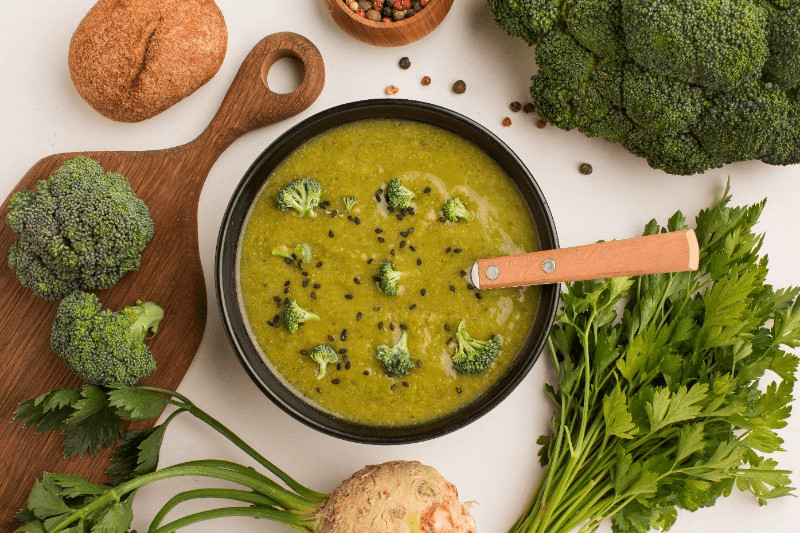Listen to this article:
Key Takeaway
Unlock the synergy of Yoga Ayurveda and embark on a personalized journey to holistic harmony. Discover the seamless integration, personalized practices, and timeless wisdom that guide you toward a balanced and rejuvenated life.
Introduction to Yoga and Ayurveda
Embracing the synergy of Yoga Ayurveda, I advocate for an integrative approach that weaves together the mindful practices of yoga with the holistic principles of Ayurveda.
This personal journey explores how this combination forms a comprehensive path, fostering balance in my physical and mental well-being.
Let’s delve into the transformative power of this integrative approach, unlocking the keys to a holistic sense of self.
Contents
- 1 Exploring the Essence of Yoga Ayurveda for Wellness
- 2 Understanding the Origins and Goals of Yoga and Ayurveda
- 3 Exploring the Energetic Principles of Yoga and Ayurveda
- 4 Unifying Mind, Body, and Consciousness through Yoga and Ayurveda
- 5 Achieving Balance and Harmony through Yoga and Ayurveda
- 6 Adopting a Yoga Ayurveda Perspective for Holistic Health
- 7 Unlocking the Healing Potential of Yoga in Ayurvedic Traditions
- 8 Contemplating the Holistic Advantages of Yoga Ayurveda
- 9 Conclusion
- 10 Frequently Asked Questions
Exploring the Essence of Yoga Ayurveda for Wellness
Ancient Sciences

Ayurveda and yoga are ancient Indian sciences. They have been around for thousands of years. Both aim to improve health and wellness.
Ayurveda uses herbs and diet to balance the body’s energies, known as doshas: vata, pitta, and kapha. I’ve discovered that understanding my dosha has helped me choose better foods for my health.
Yoga focuses on physical poses, breathing techniques, and meditation. It helps the mind and body connect. Many yogis find peace through their practice.
Holistic Health
Holistic health combines parts of a person’s life into one healthy whole. Ayurveda believes in treating symptoms and the root cause of illness.
Yoga is a part of my daily routine because it makes me feel balanced, both physically and mentally. By doing so, I feel more connected to nature too.
Both practices encourage us to live in harmony with our surroundings. This includes eating seasonal foods or practicing yoga outside.
Understanding the Origins and Goals of Yoga and Ayurveda
Historical Roots
The origins of both Yoga and Ayurveda are deep-rooted in ancient India. They emerged from the Vedic traditions, some of the oldest spiritual texts known to humanity. These practices have been passed down through generations for thousands of years.

Yoga was developed with a strong emphasis on spiritual growth and as a spiritual practice, aiming to help individuals reach Moksha or liberation from worldly suffering.
On my journey, I’ve found that yoga provides physical benefits and enhances concentration, serving as a holistic spiritual practice that calms my mind.
Distinct Aims
While Yoga aims for spiritual liberation, Ayurveda focuses on maintaining swasthya, or good health. It’s fascinating how these two systems intertwine yet serve different purposes. I see them as complementary; one cares for the spirit while the other heals the body.
Ayurveda uses natural remedies and lifestyle changes to prevent illness before it starts. It’s about creating harmony within your body and with nature around you—a concept that resonated with me when I began incorporating herbal teas into my routine as suggested by Ayurvedic principles.
Spiritual vs Medicinal
Yoga is more than exercise—it’s a way to connect deeply with oneself on a spiritual level. The practice includes meditation, breathing exercises, mantra chanting, and postures designed to enhance mindfulness and inner peace. My spiritual practice ascended to a higher plane as I comprehended the profound significance of both Yoga and Ayurveda, alleviating spiritual suffering.
In contrast, Ayurveda takes a medicinal approach using herbs, diet adjustments, massages, and cleansing techniques to remove toxins from the body, treat diseases, and maintain overall well-being. As someone who has experienced its healing effects firsthand after adopting an Ayurvedic diet change recommended by a practitioner, I can affirm the realization of its efficacy.
Exploring the Energetic Principles of Yoga and Ayurveda
Life Force Prana
Prana is vital in Yoga and Ayurveda. It’s the life force that flows through us. In yoga, we control prana with breath or pranayama. This enhances energy levels and contributes to an increased life span.
In my practice, I focus on breathing deeply during poses. It helps me feel more alive and centered.
Ayurveda also sees prana as essential for health. Keeping it balanced leads to better well-being.
Dosha Dynamics
The three doshas are Vata, Pitta, and Kapha. Each person has a unique mix of these energies.
- Vata: movement and change
- Pitta: metabolism and transformation
- Kapha: structure and fluidity
Understanding your dominant dosha can guide diet choices and lifestyle changes.
I learned that I am mostly Pitta. So, I avoid spicy food to keep my inner balance.
Asanas Impact
Yoga poses affect our energetic state. They’re not just physical exercises; they’re spiritual practices, too. Each asana targets different energy points in the body, which helps maintain or restore balance among the doshas.
For instance, forward bends cool down Pitta’s intensity while backbends heat Kaphas’s sluggishness. My morning routine always includes exercise such as sun salutations to energize my body for the day ahead.
Unifying Mind, Body, and Consciousness through Yoga and Ayurveda
Mental Clarity

Mental clarity is crucial for a balanced life. Yoga practices, like meditation, help clear the mind. This creates a sense of peace and acts as a full healing application.
Focusing on breath and mantra in yoga makes my thoughts less scattered, which helps me increase my concentration. It’s as if my mind aligns with the rhythm of the universe.
Physical Health
Yoga, as a form of exercise, strengthens our physical body. But it’s more than just fitness. Combined with Ayurveda, it nurtures holistic health.
Regular yoga makes me feel stronger and more flexible. My body feels connected to my inner self.
Sattvic Living
Sattva means purity in Sanskrit. It’s the key to harmony between mind, soul, and body.
I try to eat sattvic foods because they make me feel lighter and more focused during yoga practice.
Achieving Balance and Harmony through Yoga and Ayurveda
Dietary Regulations
Ayurveda teaches that food is medicine. It focuses on dietary regulations for health. Each person has a unique constitution, or dosha, made up of vata, pitta, and kapha. Eating right for your dosha can prevent disease. For example, kapha types should eat light foods to balance their heavy nature.

I’ve found that including more greens in my diet helps balance my energy levels throughout the day. Avoiding processed foods not only keeps me feeling cleaner inside and out but also helps me stay away from drugs.
Yoga Sequences
Yoga uses postures to align with natural cycles. Morning sequences wake up the body gently. Evening practices help wind down for restful sleep.
In my experience, starting the day with sun salutations energizes me, while evening meditation calms my mind before bed.
Imbalance Prevention
According to Ayurvedic principles, daily routines called Dinacharya maintain harmony in life’s rhythms. They include waking up early and self-massaging with oils suited to one’s dosha.
Adopting a Yoga Ayurveda Perspective for Holistic Health
Personalized Plans
Yoga and Ayurveda stress customized health plans. When creating a wellness routine, they consider your unique body type or Prakruti. This approach ensures that your activities and diet are best suited for you.
I’ve found that understanding my Prakruti, or nature, has helped me form personalized yoga practices that enhance my well-being. It’s not one-size-fits-all; some need calming poses, while others benefit from more vigorous sequences.
Seasonal Regimens
Both systems advocate for Ritucharya, emphasizing the importance of following seasonal methods for year-round health. As seasons change, so do our bodies’ needs. Adjusting your diet and yoga practice accordingly can prevent illness and maintain balance.
In winter, I focus on warming foods and energizing yoga to combat the cold. Come summer, it’s all about cooling down with gentler sessions and lighter meals.
Detoxification Processes

Detoxification is key to achieving optimal health. Panchakarma is an Ayurvedic detox process designed to cleanse the body deeply, removing toxins and promoting overall well-being. Combined with regular yoga practice, it can lead to profound changes in the physical body and alleviate spiritual suffering.
My encounter with Panchakarma was transformative; it seamlessly complemented my daily yoga routine, leaving my soul rejuvenated both inside and out.
Unlocking the Healing Potential of Yoga in Ayurvedic Traditions
Dosha Regulation
Yoga helps balance the three doshas—Vata, Pitta, and Kapha. These are vital energies that influence our health. Specific yoga poses can regulate these forces.
For instance, Vata types may benefit from slow, grounding poses to calm their system. Pittas find relief in cooling postures that release heat. Kaphas need stimulating movements to boost energy levels.
I’ve found that a morning routine with tailored yoga asanas keeps my doshas balanced throughout the day.
Marma Therapy
Marma points are like Ayurveda’s version of acupuncture points. They’re areas on the body where flesh meets bone or joints intersect. Applying pressure here during yoga can enhance healing.
Combining marma therapy with specific yoga postures increases blood flow and releases blocked energy pathways. This is key to full healing potential.
My experience showed me how massaging marma points relieved my neck tension after long hours at work.
Pranayama Techniques

Breath control is crucial in both Yoga and Ayurveda for maintaining health. Different Pranayamas support various bodily functions.
Kapalabhati breath invigorates digestion, while Nadi Shodhana calms my mind and soul and balances respiratory rhythms.
Contemplating the Holistic Advantages of Yoga Ayurveda
Stress Management
Yoga and Ayurveda work together to reduce stress. These practices teach breathing techniques and meditation. They calm the mind.
I’ve found that when I combine yoga with Ayurvedic routines, my ability to handle stress improves significantly. It’s like giving my mind a daily dose of peace through this holistic spiritual practice.
Immune Strength
Harmonizing your doshas can boost immunity. Yoga poses increase blood flow, while Ayurvedic herbs support internal health.
My experience tells me that sticking to these practices makes me feel stronger inside and out. I experience fewer sick days now, and the use of medicinal drugs is so rare.
Longevity Secrets
Long life is often linked to a balanced lifestyle. Yoga and Ayurveda offer this balance through disciplined practice.
Following their principles and methods diligently have made me more mindful of my daily health choices.
Conclusion
Yoga and Ayurveda enlighten us about the profound connection between our minds, bodies, spirits, and the universe. They reveal how each part influences the whole, guiding us towards internal healing and harmony.
I find that starting my day with yoga helps me feel more balanced. It’s a time to connect with myself before facing the world. Yoga is not just about physical poses; it’s also about calming my mind.
Adding small Ayurvedic habits to your day can lead to significant health benefits over time. Start by adding more herbs to your diet or trying meditation or mantra chanting for a few minutes each day.
For instance, I’ve incorporated turmeric into my meals because of its anti-inflammatory properties recommended by Ayurveda. This simple change has made a noticeable difference in how I feel daily.
There is always more to learn about these ancient practices. Taking classes or reading books on Yoga and Ayurveda can deepen your understanding and commitment.
Pop quiz! 🧘🤔
Yoga and Ayurveda are modern wellness trends.
Panchakarma is an Ayurvedic detox process designed to cleanse the mind.
Ritucharya emphasizes following seasonal routines for year-round health.
Frequently Asked Questions
How do Ayurveda and Yoga complement each other?
Ayurveda and Yoga both aim to balance the body, mind, and soul. Ayurveda does so through diet, herbal treatments, and lifestyle practices, while Yoga uses physical postures, breath control, and meditation.
Can beginners integrate Ayurvedic principles into their yoga practice?
Yes, beginners can easily incorporate Ayurvedic principles by understanding their body type, or ‘dosha,’ and adapting their yoga practice to align with it for personalized balance and wellness.
What are the basic energetic principles of Yoga and Ayurveda?
The basic energetic principles involve the three doshas (Vata, Pitta, and Kapha) in Ayurveda, which govern bodily functions; similarly, in Yoga, it’s about balancing energy flows within the body through chakras.
Is there a holistic benefit to practicing both Yoga and Ayurveda together?
Practicing both disciplines provides a more holistic approach to health as they address physical ailments while promoting mental clarity and emotional well-being.
How does one achieve balance through Yoga according to Ayurvedic traditions?
Balance is achieved by selecting yoga practices that harmonize an individual’s dominant dosha(s), considering factors like time of day or season that influence energy levels according to Ayurvedic wisdom.
In what ways do Yoga and Ayurveda unify the mind, body, and consciousness?
Yoga unifies these aspects through mindful movement and breathing techniques. On the other hand, Ayurveda employs natural remedies and dietary adjustments, focusing on overall equilibrium within oneself.







